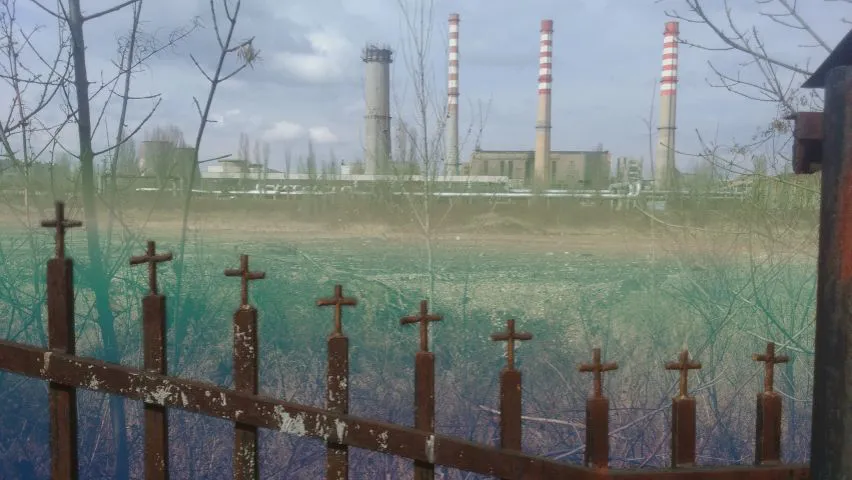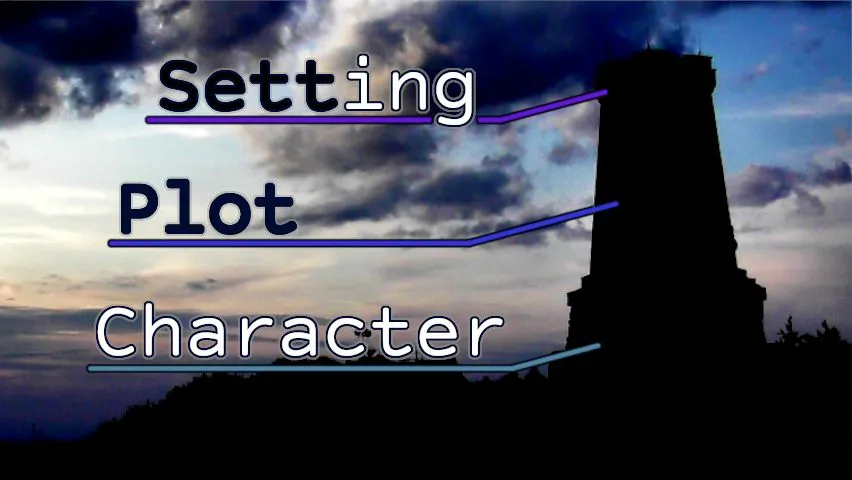Continuing from the last blog on the basics of your protagonist, the other side of this is the plot. The plot itself comes from an idea. What’s this idea? Well, it’s for you to decide. Look around at other stories, find a genre you enjoy reading: sci-fi, detective, comedy. (Not comedy.) The idea can loosely be defined as… a premise. A vague impression of… something.
What do you want the story to be about? Friendship, sacrifice, morals? Do you know where it’s going to start? Can you find how it’s going to end? What makes a plot?
Three Act Structure
The three-act plot structure is fairly common knowledge, but it does no harm to go over such information again.
The opening third/quarter of the book wants to introduce the characters and the themes. It should set the mood of the book, what it’s about and the nature of the antagonism to be faced.
The second act generally works to slowly build the risks; the protagonist learns, gets help and loses friends, while the antagonist gains strength.
Then, in the third act, the main character, and whatever they’re fighting against, confront in the final resolution, for good or for bad.
It’s not a great idea to throw in new content in the third act. There shouldn’t be a new character randomly swoop in and save everything. There shouldn’t be an element, which wasn’t suggested in an earlier act, coming into play.
It doesn’t need to follow a perfectly logical structure. It can derail into chaos by the end! But at least the chance for derailment needs to have been suggested in the other acts.
Plot Types
The structure of the plot itself put aside, you’ve also got different ‘types’ of plot.
You might have heard of the seven basic plot types, or the thirty-six basic plot types, or the nine basic plot types. Needless to say, there’s a lot of variety of what you can find. We’ll go into these in a later article, but for now, we’ll just give a few interesting ones you can work from: a passing look to the basic ideas.
You’ve got ‘Overcoming the Monster’, ‘The Quest’ and ‘Voyage and Return’. These each share many similarities, in that the main character leaves their initial place of comfort to a new location, go on some kind of journey, physical or emotional, and recover something they want, be it the Holy Grail or inner peace.
There’d usually be an obstacle to overcome, which makes up the monster. The difference is simply the emphasis. The Quest focuses on the challenge of finding and getting the ‘desired object’. The Monster focuses on building up to and facing whatever the ‘monster’ is, while the ‘Voyage and Return’ has the emphasis on the journey itself.
You’ve got the Rags to Riches story, which is a character in a bad situation, through their strength or through chance, building to be in a strong situation. The revenge story of getting back at something for a misdeed. The Riddle, Love, Forbidden Love, Sacrifice, Change, Rebirth… you get the idea.
What do these have in common? For one they’re all about the journey of the main character. For another, they all share a similar structure, based fairly closely off the Sophisticated Hero’s Journey we spoke about last time.
It starts in a known location, something the world or the character can consider ‘normal’. The first thing that comes about, hopefully in the first page or few pages, is an event which kicks into action everything else in the plot: something that pushes the protagonist into action.
Starting
Stories rarely initiate at the very first page they began with. It’s almost impossible to find, specifically, where the very thread of a story is, as everything’s cause-and-effect.
But the plot has usually been developing since long before the main character was a part of it; certainly before the book itself started.
Does the Lord of the Rings jump with Morgoth’s creation and contain eight hundred pages upon Sauron’s corruption and his rise to the dominant evil force?
Does Star Wars spend hours of screen time unraveling the founding of the Federation or the Jedi order? Both move with nothing more than the single incident which first brought the protagonist into the story’s path.
How the story follows beyond that is partly up to you, and partly up to the ‘free will’ of your character. But it will almost definitely include clashing with the antagonist, working towards the end goal and eventually getting caught up in the final conflict between the main character and whatever adversity besets them.
Try to find the last line of the story as soon as you can. That gives you a direction. Maybe you’ll think up a few key moments as you go; writing them will lead to other options, other turns, as you’ll come to find the story writing you just as much as you write the story.
But if you know the destination, you’ll always be on track. Terry Pratchett, author of the Discworld series, knows it best:
Sir Terry Pratchett
“Writing a novel is as if you are going off on a journey across a valley. The valley is full of mist, but you can see the top of a tree here and the top of another tree over there. And with any luck you can see the other side of the valley. But you cannot see down into the mist. Nevertheless, you head for the first tree.”
A series of random events doesn’t make a plot. Developing the idea, the road towards a goal is what a plot is. You don’t need to understand the whole thing to begin: just the ending and a few key points (the beginning helps too).
You can use questions to help develop your plot, like:
- ‘What do I want to achieve with this idea?’
- ‘How am I going to achieve it?’
- ‘Why do you want to tell this story, what’s driving you?’
There are more sophisticated ones, but this will suffice. The answers can be straightforward and concise, as you are not required to have 10 pages of your plot in order to move forward.
Even a few sentences can be enough to start a plot; usually, outlining the story as economically as possible is a strong way to trek anyway. Break it down to its essence and build it back up from there. We can even help you with this procedure, through our Developmental Editing!
When you’ve developed the end goal, you can think about where to start. Everything else comes into play as you write and think about your story. You don’t need to have your story fully planned, think back to the valley. You just need an ending and a few important moments, and everything else can be fit into place during writing.
Don’t forget, the story changes as it’s written. The story can’t remain the same with the initial plan set in place. It evolves, and evolution is beneficial.
Conclusion
One final thing you should take away from this: plots aren’t a static thing. They’re organic. They change and shift and develop, just as your characters do. The evolution of your story from how it started out is a beautiful process.
The plot, however, isn’t the be-all end-all of making a good story. Any questions? Comments? Concerns? Don’t hesitate to send us an e-mail at [email protected]!
Don’t forget to check the partner blog to this, which looked at the basics of creating your protagonist. More articles coming soon. And remember, if you need any help with writing your book, novel or short story, Inlet will help you.



